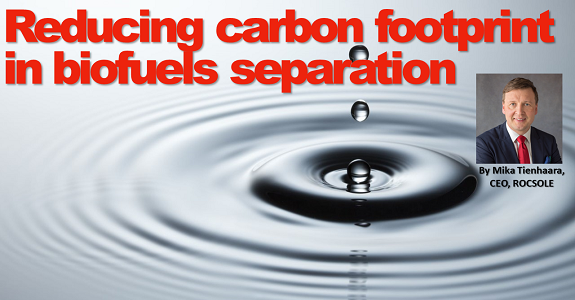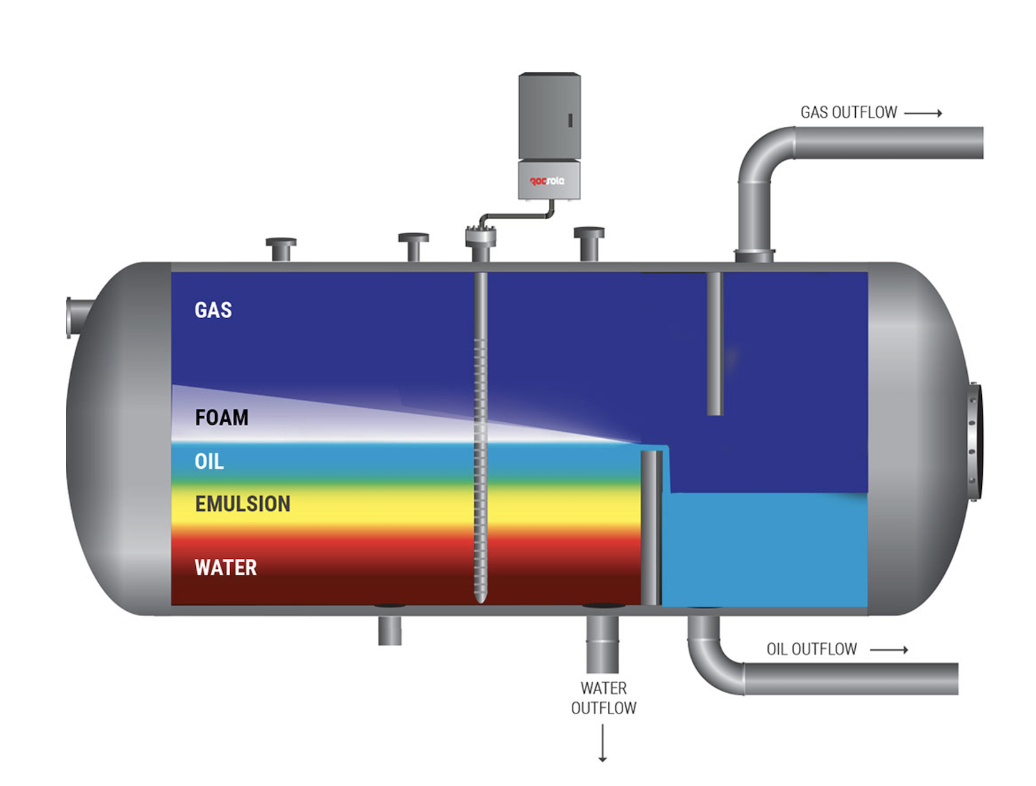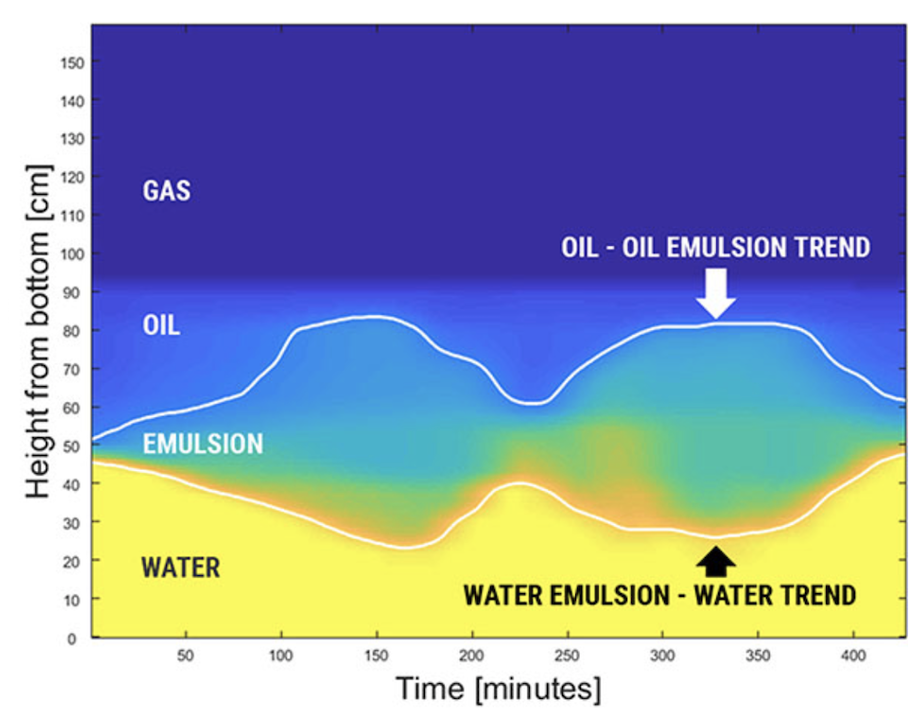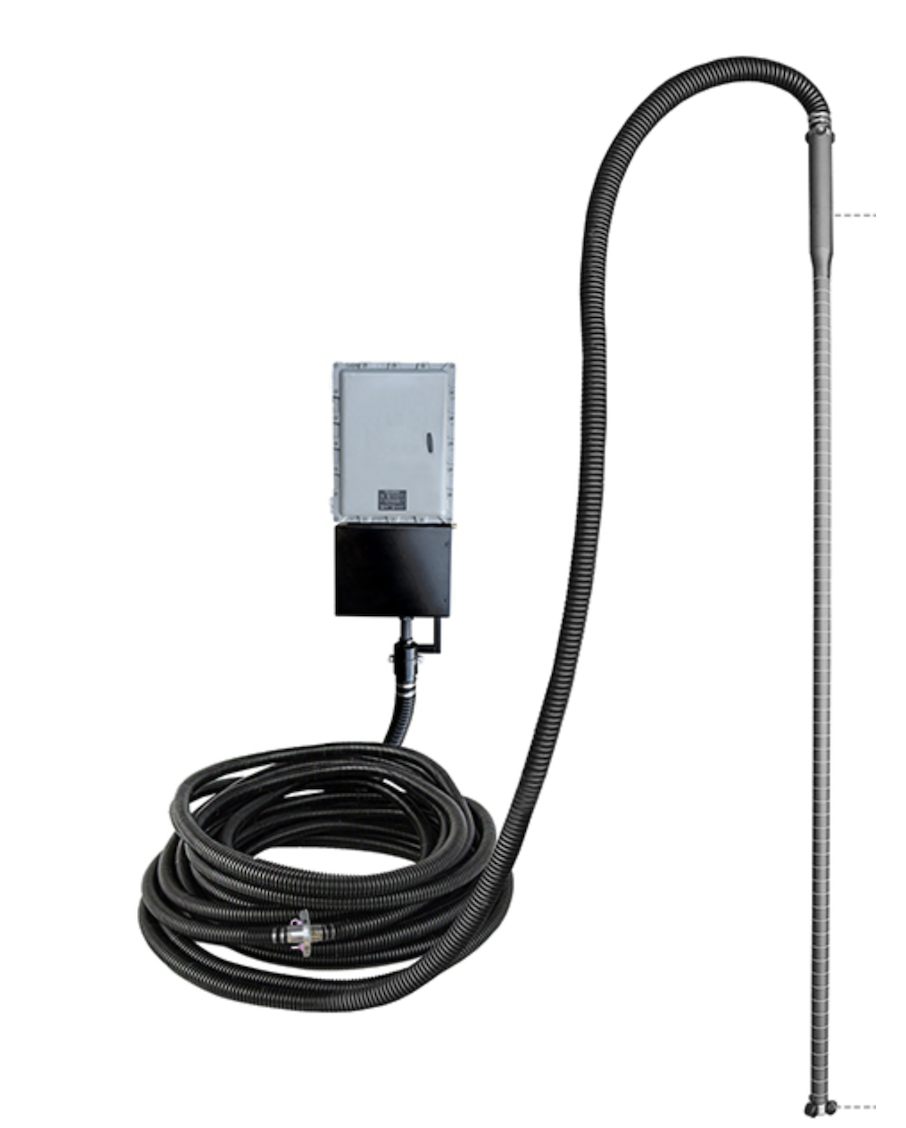Reducing the carbon footprint in biofuels separation

By Mika Tienhaara is CEO at ROCSOLE
Special to The Digest
One of the primary polluting industries in terms of carbon-based emissions has been the Oil & Gas industry. Nowadays, we have an energy transition phase ongoing, bringing a variety of renewable energy sources into the energy mix. However, by producing these biofuels based on new feedstocks will bring new and bigger production challenges: Firstly, the varying feedstock quality will harm a stable production, secondly many of the feedstocks are rather difficult in oil/water separation, and thirdly the nature of recycled feedstocks is that they will heavily contaminate the piping and all the instrumentation. Generally, a struggle has been to have robust and reliable level instrumentation for critical separation processing equipment to function as more than 50% of the root causes for separation failures are based on wrong level information*. In harsh and hostile production environments where the fluids are mixed to heavy unbreakable emulsions with sensor surfaces covered with sticky matter – leads to a lot of unnecessary and costly maintenance and unexpected shutdowns with major carbon exhausts.
These things are bringing significant challenges to producing biofuels effectively. From the customer’s point of view, the main problems are in operations: Deposits on the instruments and oil/water emulsions in separation are making processing complicated, costly and challenging.
“More than 50% of Oil & Gas Separator Failures are due to faulty level instrumentation.”
For these reasons, new technologies and process control methods are needed. The issue is also that these types of unexpected process shutdowns are very common and a key source for carbon emissions and other toxic pollutions, as other processing and treatment equipment will struggle to function properly.
Rocsole PROBE sensor to visualize the biofuels separation process
“Rocsole’s – See Beyond (Deposits)” solution is developed to overcome the issues. From the practical point of view, we are discussing a PROBE sensor that is placed into a separator where all the interfaces are tomographically imaged, especially the emulsion layer between oil and water is clearly seen.

Figure 1: Rocsole probe sensor installed in a separator. A standard flage connection is used. The probe sensor pierces the whole separator and all the interfaces and layers are tomographically imaged.

Figure 2: An expected tomographic image of separator interfaces shown as a “time-pipe” approach. For the customer the most important layers are oil-oil emulsion and water-water emulsion trends fed to DCS. After getting these two parameters the customer can diminish the emulsion layer thickness by chemical feed and other process controls (temperature, speed, feed stock…)
What is electrical tomography?
Electrical tomography is a technology that allows us to see inside pipes and separators/tanks, removing doubt from any multiphase processing. The general idea in tomographic measurements is to expose the target of interest to a physical stimulus, i.e., in this case with voltage, and to measure the current response from the other electrodes (shown in Fig. 3). From the response signals it is possible, with the aid of tomographic mathematical models, to infer the distribution of different deposits and liquids within the target. Results of tomographic measurements are displayed as an online cross-sectional image (Fig. 2).
“Tomography practically means slice imaging (tomo = slice and graphy = images)”
Electrical tomography is deployed to solve problems other technologies are not suitable for, especially in the case of depositions and emulsions combined. One of the main advantages of the technology is that it can differentiate all the fluid (oil, gas, water) and solid (waxes, scales, hydrates, sand) phases inside tanks—even when there is a heavy deposition present on the sensor.
“Rocsole provides reliable emulsion layer measurement through a deposited surface”
How Rocsole’s tomographic technology is adapted in the biofuels industry with Artificial Intelligence (AI)?
Rocsole Separator Profiler is available as an CSA, IECEx, ATEX certified. The separator profiler is easy to install using existing flanges on the separator and therefore does not require modifications to the target. The Separator Profiler does not require regular maintenance nor cleaning, and can be connected to PLCs and DCSs (Modbus and analog outputs available). Commissioning can be performed remotely or on-site. A typical setup is shown in Fig 3.

Figure 3: Rocsole’s PROBE sensor. The probe has 64 electrodes that are generating and measuring electrical pulses. This raw data information is used to calculate tomographic images as shown in Fig. 2. The electronics in ExD cabinet is connected to a probe.
In addition to the hardware side, an Artificial Intelligence (AI) can be added. The clear benefit of adding customer’s process information to the Rocsole’s probe sensor data is that the process dependencies are fully evaluated and full emulsion control is achieved. In a practical manner, the emulsion layer gets thinner, which speeds up the process and provides better-quality oil and cleaner wastewater at the same time which is a double benefit.
“By thinning the emulsion layer, the separation time is decreased, which increases the total production volume.”
“We are producing technology where the sensor itself has artificial intelligence. With the help of algorithms, artificial intelligence is able to create models that are suitable for the process and increase production efficiency, reduce carbon footprint and diminishing unexpected shutdowns.
Reduction of CO2 exhausts
Assuming an oil field production 50,000 barrels of oil per day – by improving the production efficiency with Rocsole’s probe sensor, including removing the unexpected shutdowns by 10%, the reduced CO2 emission is 438 000 tons / year**. This refers to 9,520 reduced cars on the road per year.
Conclusion
Analyzing the user and customer pain points in operations, we found out that the majority of operational downtime and unplanned shutdowns are due to the fact of level sensor failures. Also, the domain of emulsified liquids in processes has to date been a mystery to enable real-time insights. With Rocsole’s “See beyond” technology, we can provide unique data, that allows our customers to improve efficiencies vastly and to reduce carbon footprint. This is probably one of the key domains in terms of truly going for Industry 4.0 and doing a digital transformation, that will allow for remote operations and process automation.
References
*Offshore reliability data (OREDA 2002)
**Typical oil field production that uses the Rocsole’s solutions. Increased efficiency leads to improved economic results, but at the same time,
improved efficiency also leads to carbon emissions being eliminated. In order to clarify this, this can be converted into the corresponding number of cars.[2]
[1] Source: SPE article Savvy Separator: Level Design and Control in Gravity Separators, JPT magazine
[2]Source: epa.gov – average annual car emissions are 4.6 tons of CO2)
Category: Thought Leadership, Top Stories















